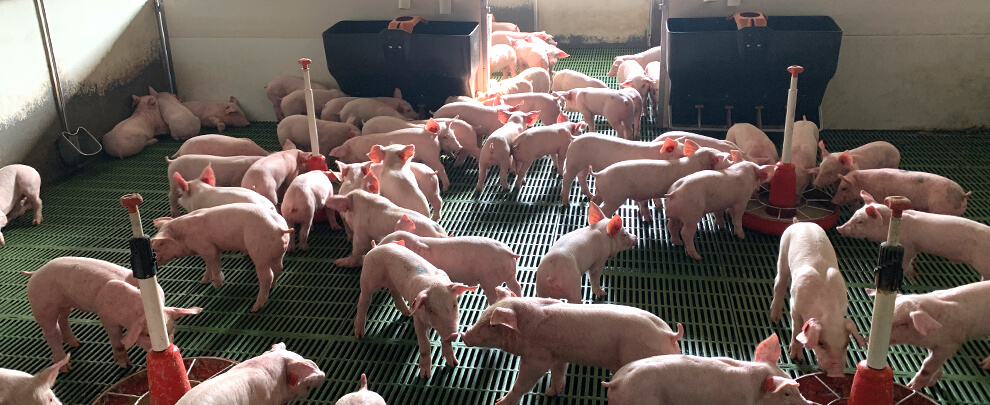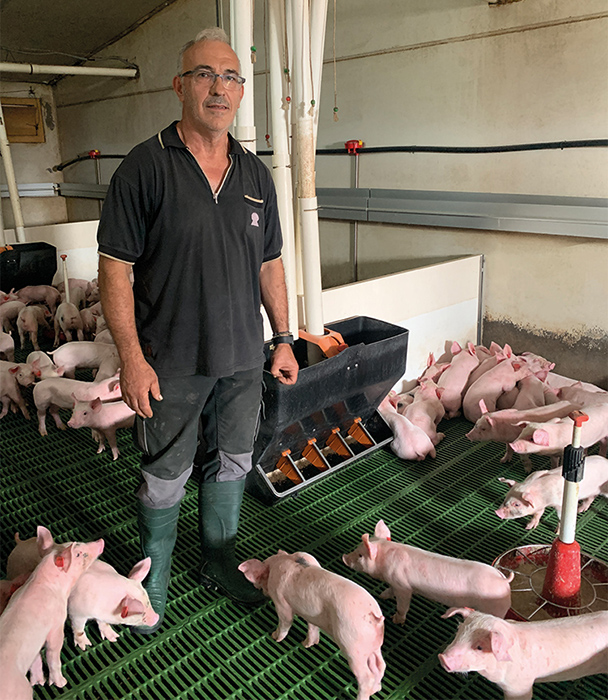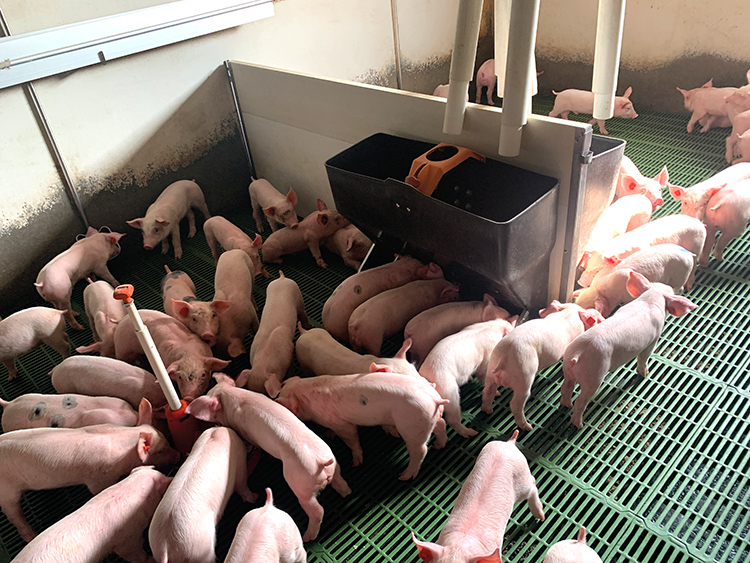Blog
Blog

J.C. Latre: “The TR5 is a feeder that stands out for its regulation”
21st November 2024 - Success stories
Some Rotecna products installed at the Leridana de Piensos Farm in Farlete (Zaragoza) are over 16 years old and continue to fulfil their function. We went to these facilities to talk to the farm manager, Juan Carlos Latre, who highlighted the quality and exemplary functioning of Rotecna products, such as the already consolidated TR5 feeder for weaning. Latre explains that its simple regulatory system makes it ideal for feeding piglets and obtaining reasonable conversion rates.

Juan Carlos Latre in one of the weaning rooms. Photo: Rotecna.
Why did you decide to commit yourself to livestock?
When I was little, my father already had a farm of 80 sows in a closed cycle, so when I finished my business studies, as I had the business set up, I decided to continue with it. Initially, the family farm was in the village. However, wanting to expand, we had to move to the outskirts and build these new facilities to accommodate the 1,000 sows we currently have.
How is the farm distributed?
The farm has four sheds: one for mating and control, one for confirmed gestation, another for maternity with 224 places, where we work with Rotecna’s Dositronic M and, finally, the transition shed, which is fully equipped with Rotecna products.
How many people work on the farm, and what are their tasks?
We now have five workers: one is dedicated to mating and confirmed gestation, another is in maternity, a third is in transition, and a support person is available when help is needed in any of the sections. Finally, there is me, who is in charge of the farm’s management and maintenance.
In the weaning rooms, you have a TR5 feeder from Rotecna. What benefits does it bring them?
The TR5 feeder stands out for its regulation and is very simple. It must be regulated the first few days so that the piglets eat little and do not gorge themselves on food to avoid diarrhoea. As the days pass, we will adjust the regulations to increase the feed the feeder offers. On the other hand, being a dry feeder without corners, and due to the material with which it is made, it is straightforward and quick to clean. Also, we have installed the support for the TR5, allowing us to rotate the feeders to empty and wash them well.
How do you adapt piglets?
For the first few days, we use Rotecna’s Maxi Pan. We prepare some porridge, and the piglets adapt to the feed. After a week, we remove the dishes, and the animals eat the feed from the TR5, which they then adapt to immediately.
Has the conversion rate improved with this feeder?
It improves a lot because there is no waste of feed. If the feeder is appropriately regulated, it does not cause problems, and the conversion rate is outstanding.

TR5 prevents feed waste. Photo: Rotecna.
What other Rotecna products have you installed?
We have many: all PVC separators, slats, Dositronic M in maternity, dosers in gestation, hoppers, etc. Working with Rotecna products guarantees the quality of the material, and they are easy to handle and clean. Some products have been installed for over 16 years and do their job perfectly. Finally, I would highlight that Rotecna has an excellent after-sales service. They are always there.
On the other hand, what are your main health concerns?
Luckily, we have not had many health problems, none serious. However, there is always uncertainty about the possible arrival of diseases such as ASF or PRRS. When gilts enter, we monitor these animals to prevent them from interfering with the farm’s production.
What biosecurity measures do you adopt to reduce the risk of disease contagion?
We have a farm fence, a sanitary ford at the entrance, and changing rooms to access the interior with farm clothes. Also, we are cautious when entering animals.
What future challenges do you have for the farm?
The main challenge for this farm is to produce as many quality piglets as possible that have no problems when they reach fattening.






